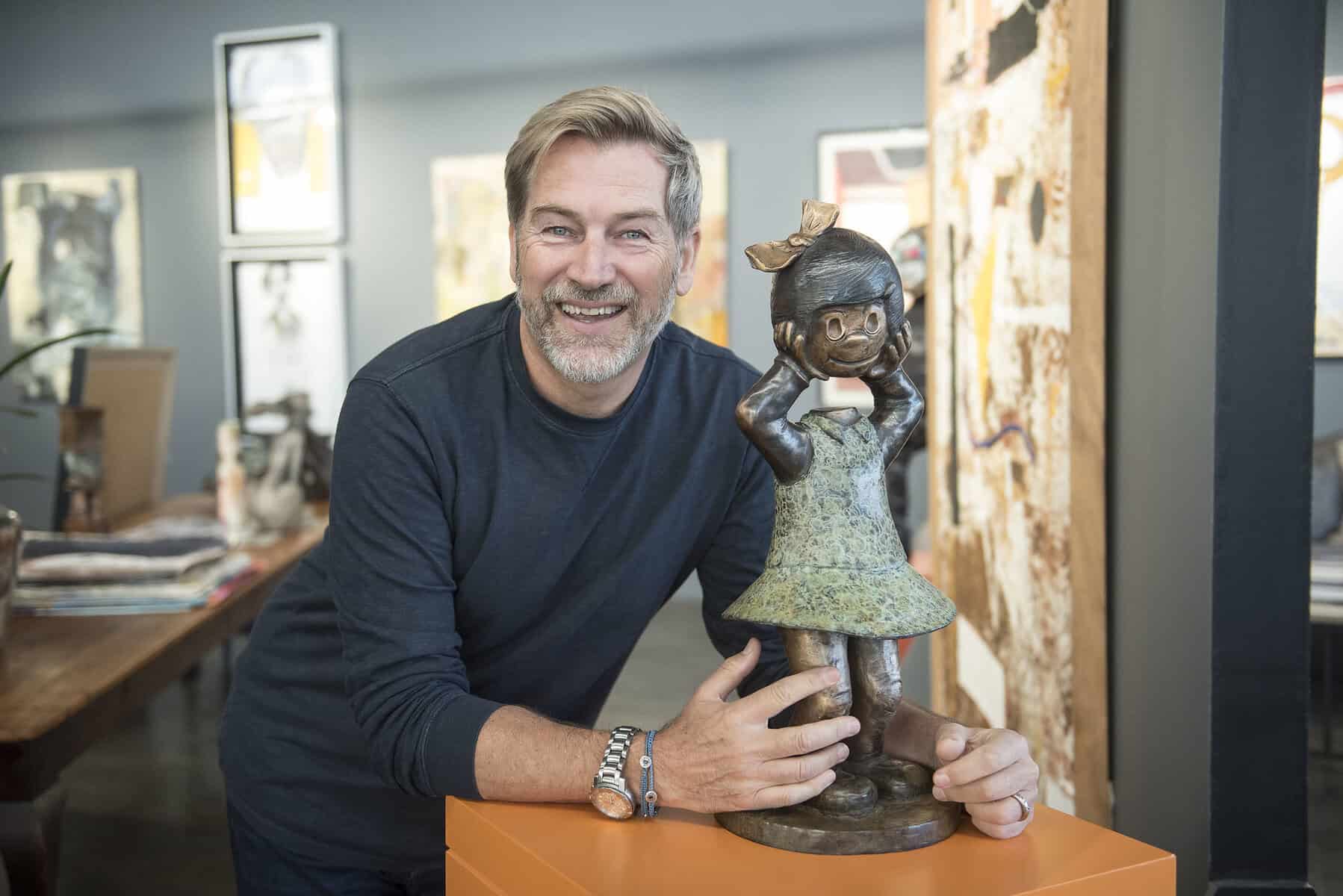Forming a relationship with art is essential. Visit galleries and see what speaks to you. Don't buy for a while.

You can spot them a mile away. The dark horn-rimmed glasses, carefully curated polo neck shirts, suede jackets. Wardrobes that border on intellectual fascism, projected with inflated opinions. These are the ponytailed pretenders of the art world. And they can be very offputting to everyday lovers of art for art’s sake and first-time buyers.
Owner of Art Eye gallery in Dainfern, Johannesburg, Tyrone Selmon, doesn’t believe in the fuss. He said the best way to start is to stop trying to buy anything at all.
“Forming a relationship with art is essential,” he said. “I always suggest people don’t try buy anything in the beginning. Visit galleries and see what speaks to you.”
Just walk in and look. He said a few months of looking without buying is quite important. “After that, find a dealer you trust. Build a relationship. A good dealer will come to understand your eye and guide you. It’s not about selling. It’s about placing the right work with the right person.
“The journey of becoming a collector or even just buying a piece for your home is personal,” Selmon said. “We’re all swayed by what other people like. You’ve got to block that out.
“Go in with no intention of buying. Just see what catches your eye. Don’t think about where it would hang. Ask yourself: do I like this? Does it move something in me?”
Don’t buy because it’s trendy
Too many people, he cautioned, buy what’s easy. “Fashionable work or pieces that feel familiar get snapped up. But people outgrow them fast.
“They didn’t connect with it, and now they’re stuck with something they don’t love and can’t offload. That’s not collecting. That’s buying wallpaper.”
Others simply invest in art to make an investment buck. “There’s a big difference between being an art investor and an art lover. Somewhere in the middle is a good place.
“Collectors can be a bit unhinged, and I say that with love, I am one, but passion is important. The best collectors are the ones who know what they like and back it.”
Also Read: Why are we so negative? An expert answers
Connection, he said, should be with the piece, not the person who made it.
“You don’t need to know the artist. That takes time. And let’s be honest, if you had to befriend everyone whose work you collect, you’d never get anything done.
“The artist’s job is to be vulnerable through the work. They’re not performers. If the work speaks to you, that’s enough.”
Social media unfortunately can also influence any prospective art collector. Selmon said it’s a double edged sword.
“It’s useful, but it’s also full of noise. There’s a lot of trading in paint and canvas going on. That’s not the same as collecting. Build relationships with people you trust and then decide what matters to you.
“Art in South Africa is still cheap compared to Europe or the States. Same quality. Three times the price. Sometimes more.”
Art is more affordable in SA
“You don’t need to be rich to collect art,” said Selmon. “However you need clarity, a bit of homework and time. You don’t buy a great collection in one go. You build it over years. Sometimes decades. And that’s the beauty of it.”
When buying with value in mind, Selmon said several factors come into play. “Technique. Skill. Productivity. And who’s buying the work. How the artist’s career is managed matters.
“Once the work enters a gallery, it becomes subject to business. It’s like any other item of value. It’s about more than the painting, it’s about what the artist is building.”
Academic accolades and exhibitions help, but they don’t guarantee anything. Van Gogh sold one painting. That should tell you everything. It’s the story, the struggle, the work. Not the paperwork.”
Art tells a story
Also, there is a difference between galleries and actual art dealers. “Galleries are businesses. Dealers who run galleries tend to look for something else. That spark. The ones who aren’t trying to impress.
“That usually means they’re not making work for the market. And that’s when it stands out. Fashion fades. Authenticity sticks.”
Limited editions have a role, but he said that buyers must learn to understand their value. “They’re not originals, but they build an artist’s reach.
“Tretchikoff did it. Today, the internet does it faster. Just don’t overpay. The only time a limited edition might beat the original in value is bronze sculpture. Those copies can outsell the one-off.”
Framing and care, he said, can’t be afterthoughts after spending on a work. Look after art and it will pay aesthetic dividends.
“A cheap frame on a great piece is like putting plastic hubcaps on a vintage car. We sell art, not frames, but we help our clients source top-quality framing at cost. Same with insurance.
“Add it to your household cover but ask questions. Some insurers want certificates. Most works don’t need maintenance but keep them out of direct sunlight. Especially in coastal towns, works on paper need more care in humid conditions.”
Now Read: Lefokolodi: Play it freaking loud






